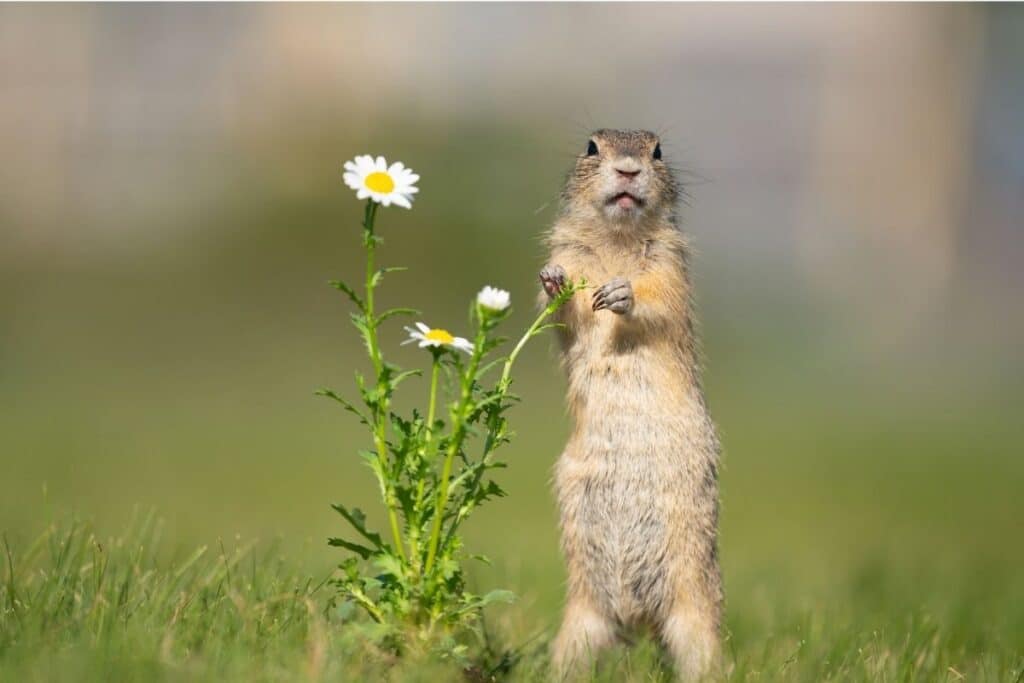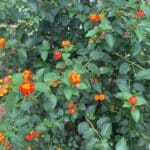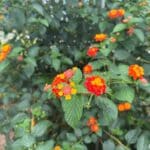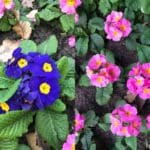Squirrels are some of the most clever critters you will encounter in your garden, which makes keeping your flowers safe all the more difficult.
These furry scavengers will get into almost anything, and they are everywhere. Not only can they harm flower beds, but they are often the culprits of missing bird feed, missing vegetables or fruits from your garden, and holes that can be found throughout your property.
Although squirrels can be troublesome neighbors, many people do like to feed them they are amusing to watch!
If you have squirrels that live on or near your property—regardless of whether or not you are feeding them—you may want to do some planning before planting flowers.
Do Squirrels Eat Flowers?
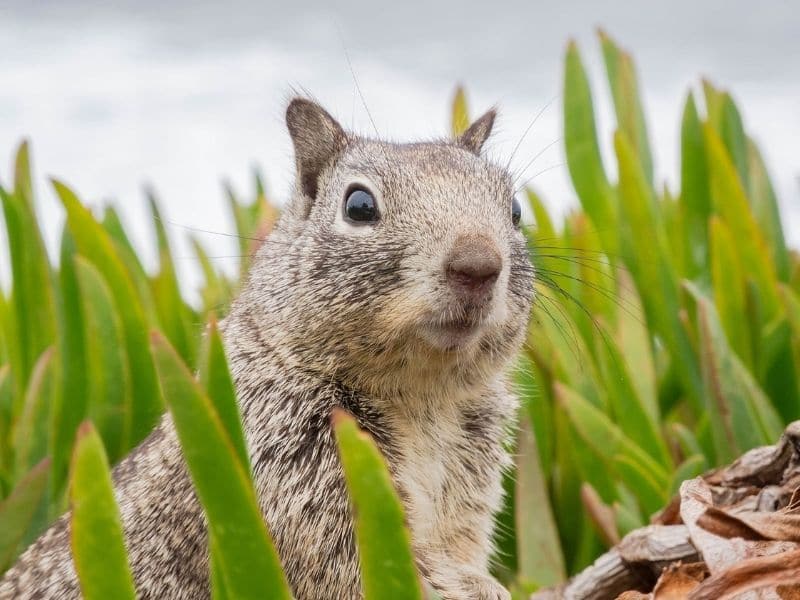
There are certain types of flowers that are more resistant to squirrels than others, and some flowers are even effective at keeping squirrels out of the flower beds altogether.
When it comes to a hungry critter, there are very few flowers that squirrels won’t eat. There are, however, certain flowers that squirrels are less likely to bother due to the smell, taste, or texture of the plant.
Squirrels are also notorious for digging up flower bulbs before these susceptible plants have even gotten the chance to sprout. Thankfully, there are some flowers that can be planted that will deter this type of activity.
What Are the Most Common Natural Squirrel Repellent Plants?
Here are some common garden plants squirrels hate.
#1. Daffodil
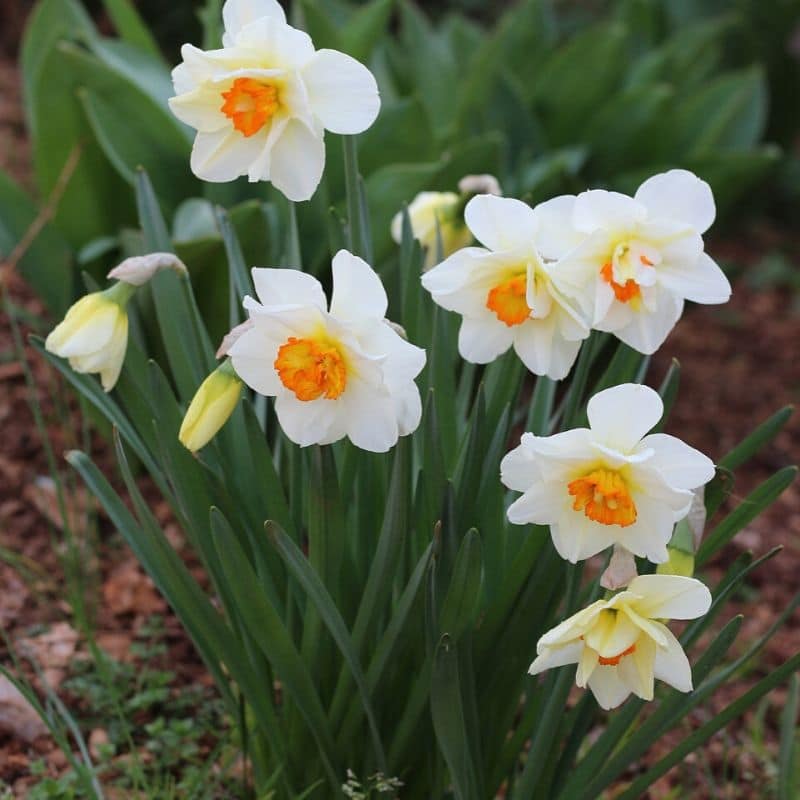
When it comes to keeping your flower bulbs safe from squirrels, you shouldn’t need to worry about your daffodils. Daffodil bulbs have a taste that squirrels and other animals don’t like, so they are likely to leave them alone.
Squirrels dislike the taste enough that even planting daffodil bulbs near other bulbs may be enough to keep the other plants safe.
If daffodils are your only natural squirrel repellent flower, consider planting these bulbs throughout your flower garden as a protective barrier for your other plants.
Daffodils are hardy perennials in USDA hardiness zones five and up and are considered very easy flowers to plant, grow, and nurture. These flowers come in a variety of colors including orange, yellow, and white.
Daffodils are early-blooming flowers. In some warmer regions, you will start to see blooms in late winter into early spring. In the cooler climates, your daffodils will most likely bloom after the last frost, but they will be spent by the time summer comes along.
#2. Allium
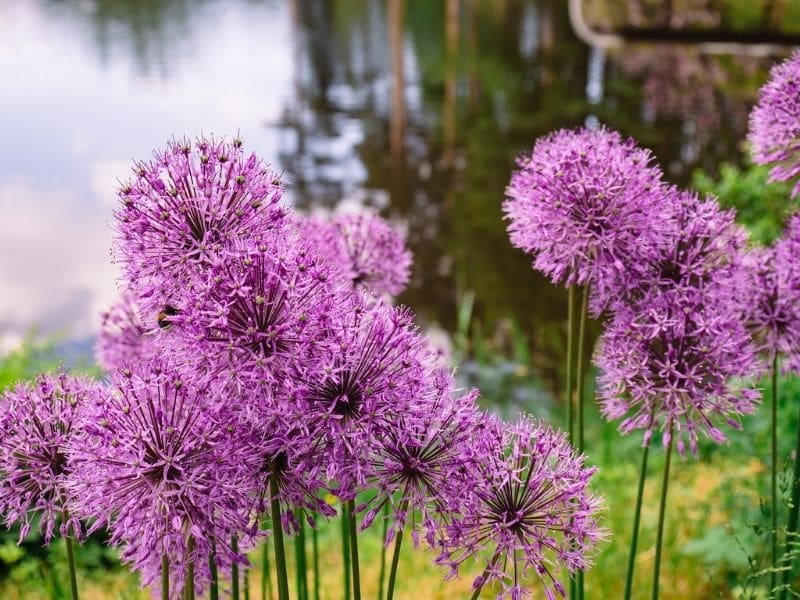
The alliums is another squirrel-repellent flower that uses the power of stench to keep critters such as squirrels away.
Allium, while commonly known as a flower, is actually a genus consisting of a wide variety of plants that includes garlic and onions—which may be where the strong smell comes from!
Even the flower varieties have a strong scent that, while it may not bother us, will keep a squirrel from investigating, eliminating the potential for harm from those creatures.
Most alliums are perennials in USDA hardiness zones three through nine.
They can also be grown as annuals in either warmer or cooler climates. This means they will not come back year after year and will need to be replanted each season if you want to keep them around.
The flowers form in tight clusters of star-shaped flowers that come in various shades of pink, red, burgundy, and purple.
#3. Bleeding Heart
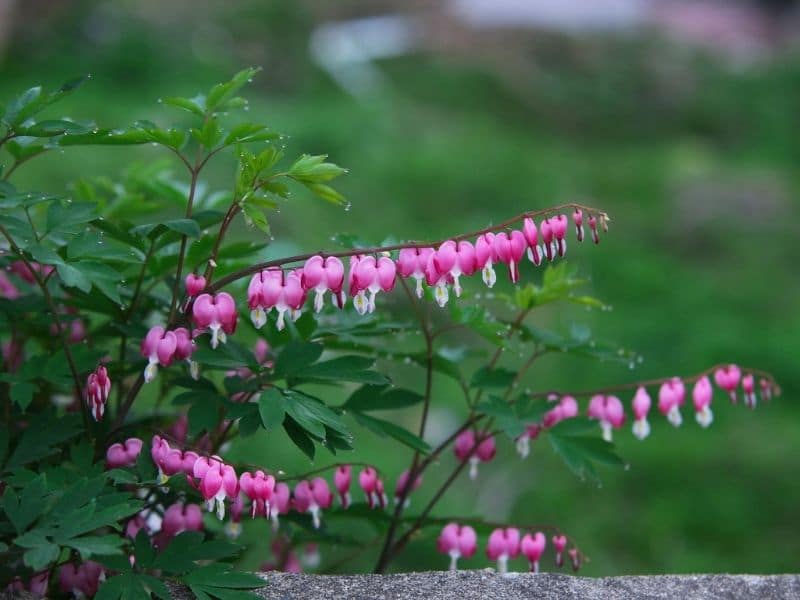
While bleeding heart flowers don’t have the capacity to protect other flowers in your garden, they will most likely be spared from any squirrel damage themselves. Bleeding heart is one of the flowering plants that repel squirrels.
Bleeding hearts, while beautiful to look at, do not have appealing foliage or blooms for critters to munch on. These plants also do not taste as good as many other options most likely available to your backyard squirrels such as grass and weeds.
Bleeding hearts are a unique addition to any flower garden and can be grown as perennials in growing zones three through nine. These flowers have eye-catching heart-shaped flowers that are unmistakable and unlike any other flowers you may have growing in your garden.
These flowers come in red, pink, white, and yellow and have the added benefit of attracting birds and butterflies.
#4. Irises
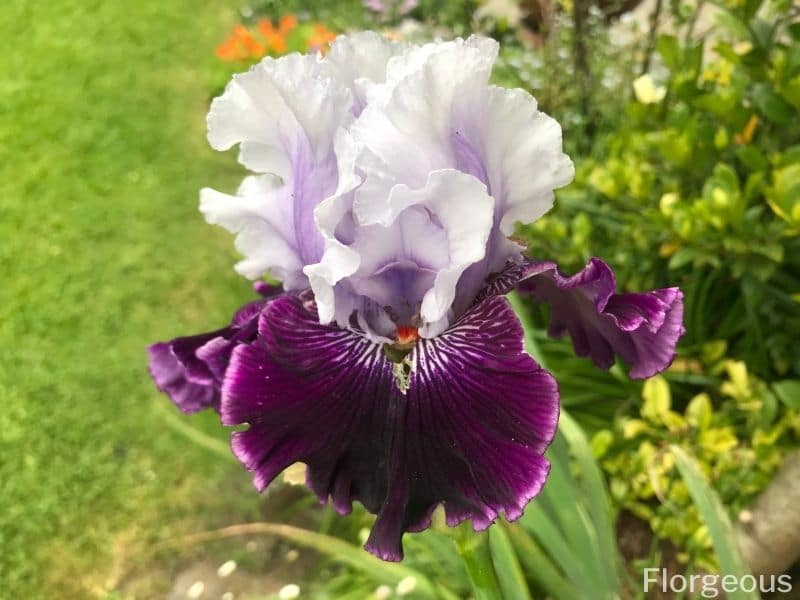
Irises, while fairly squirrel-resistant, may still be targeted if planted with a group of other squirrel-proof flowers that are more effective at getting rid of squirrels.
Irises do not necessarily taste bad to squirrels, but they also don’t taste all that good, making them an option only when your critters are desperate. The foliage of these flowers is also not particularly inviting to mammals, and there are generally better options available.
If you live in USDA hardiness zones three through nine, you can grow your irises as perennials. Irises are known for their simple needs, making them easy flowers to grow—meaning you can grow them even if you don’t have a green thumb!
Iris flowers come in a wide variety of colors including, pink, purple, red, orange, yellow, white, blue, and combinations of these colors.
#5. Fritillary

Fritillary flowers, while not as commonly found in gardens, are very effective in deterring squirrels from not only eating the plants themselves but from keeping squirrels out of your garden altogether.
There are a wide variety of fritillary flowers, and they are all squirrel resistant due to their strong fragrance.
Simply planting any variety of fritillary flowers throughout your beds or bordering your garden beds should be enough to deter squirrels from considering your flowers as a meal.
Most varieties of fritillary can be grown as perennials in USDA hardiness zones five through nine, although they can be planted as annuals in both warmer and cooler climates.
The blooms are bell-shaped and hang down from their plant stems as a bell traditionally would. The flowers come in colors such as maroon, green, a bright yellow-green, and black.
#6. Galanthus

The Galanthus flower is another squirrel-repellent flowering plant that is effective due to the smell it emits. Even the bulbs give off a fragrance that is sure to repel squirrels while thankfully not being appalling to the human nose.
If you struggle with squirrels digging up your flower bulbs, Galanthus bulbs are generally effective in preventing squirrels from digging up surrounding bulbs as well.
There are a few dozen different varieties of Galanthus, all with equal effectiveness in deterring squirrels. Most varieties can be grown as perennials in growing zones three through eight, although there are some large varieties that are hardy in zones three through nine.
These flowers will likely bloom before most other plants in your garden and are generally white in color with the occasional hint of green.
#7. Dianthus
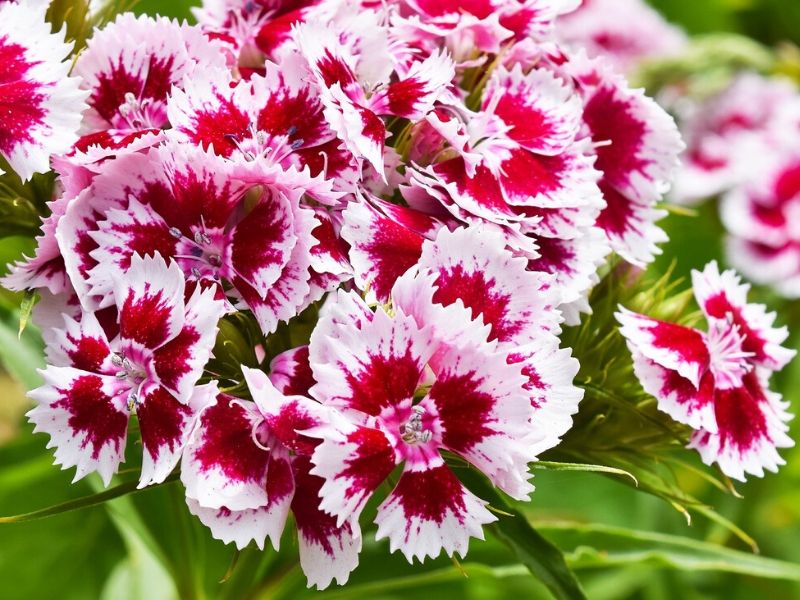
Dianthus is one the common squirrel deterrent plants, but they may still fall victim to these creatures if there are no better options available.
These flowers have a slight fragrance that is not desired by squirrels, but it is also not as unappetizing as many other squirrel-resistant flowers.
The taste of the dianthus is also not generally a squirrel’s favorite, but it can be tolerated. Therefore, your dianthus flowers should be safe from squirrels for the most part, however, if they’re found out of desperation, they may be one of the first squirrel-proof flowers to go.
Although most varieties of dianthus are perennial, there are some biennial varieties as well, meaning they take the first year to grow before blooming the second year.
Most of these varieties grow best in USDA hardiness zones three through nine. These flowers are generally only seen in pink, although the range of pink shades is extensive.
#8. Goldenrod
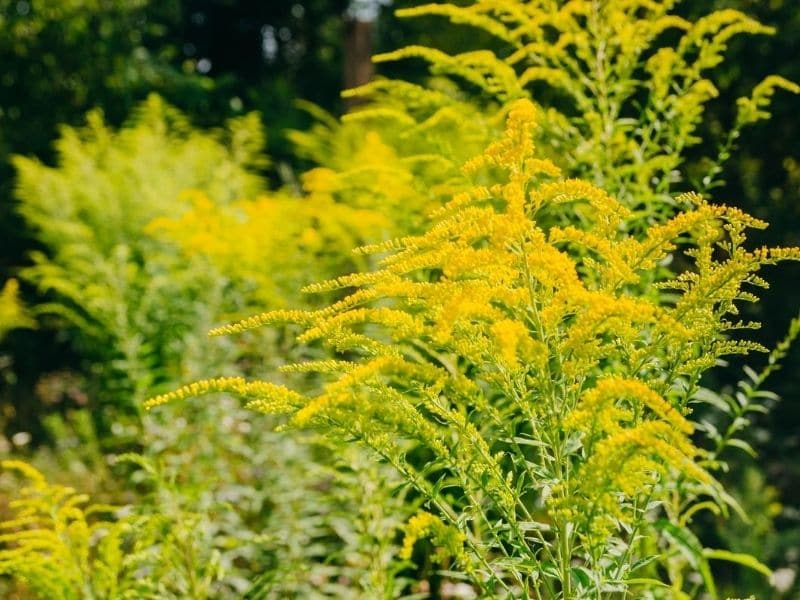
Goldenrod has adapted to be fairly resistant to any mammal, including squirrels. Both the flowers and foliage have an unappealing taste that will drive squirrels away.
Although commonly found as a wildflower growing in fields, these flowers can be planted in or around a flower garden to add a protective barrier for your other flowers against nearby squirrels.
Goldenrod is a member of the aster family and is considered a herbaceous perennial.
These flowers are considered hardy in growing zones four through nine and are native to North America. They only come in one color—a yellowish-gold—and attract pollinators such as bees and butterflies.
See more: Ragweed vs Goldenrod
#9. Lily of the Valley
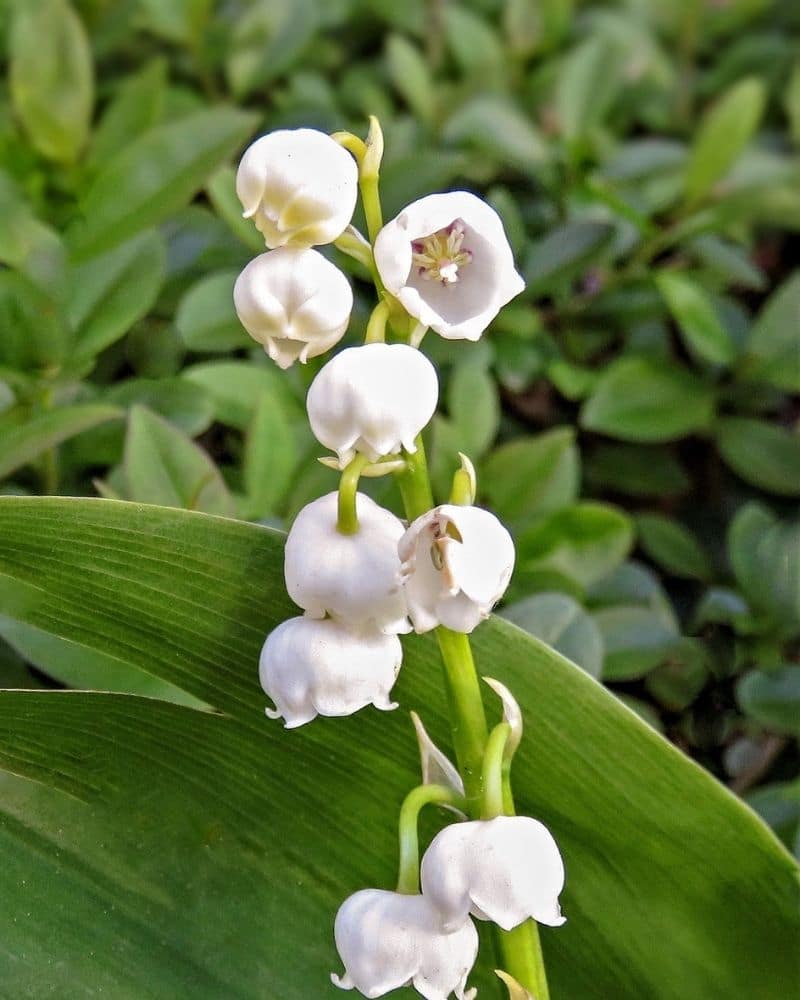
Lily of the valley flowers are a popular shade flower that are not only beautiful but are fairly squirrel-resistant. The primary defense these flowers have against squirrels is their strong scent that squirrels and most other mammals dislike.
This scent can be detected by these critters from a decent distance away helping to keep them out of your flower garden altogether. The flowers also do not have appealing foliage for animals to nibble. In fact, they have very few leaves that are large and thick.
Growing lily of the valley flowers can be a simple task, especially for an experienced gardener. These flowers grow as perennials in USDA hardiness zones three through seven and prefer shade or partially shaded areas.
The classic lily of the valley flowers are white, but there are some varieties that come in shades of pink. Once you get lily of the valley flowers to grow, you do need to watch out for unwanted proliferation as they are aggressive spreaders.
Other Ways To Deter Squirrels

Squirrels are notoriously tricky animals that will outsmart even the most elaborate garden protection setups. Some people might use squirrel repellent to get rid of squirrels.
Generally, your best defense against squirrels is to plant squirrel-proof flowers in and around your garden beds you have to make the squirrels think they don’t want anything in your garden.
However, if your squirrel-deterrent flowers are not enough to keep squirrels out of garden, or if you simply don’t want to grow these squirrel repellent plants, there are some other options you can try.
Don’t Leave Food Out
Although squirrels can be found in almost any neighborhood even in the middle of nowhere they tend to congregate in areas where food is most easily accessible.
If you leave your trash bin lids open, or if you have fruit or vegetable gardens actively producing crops, you may have an excess of squirrel visitors.
Keeping all trash sealed tightly is one simple step towards making your yard less appealing to squirrels. In addition, collecting your produce as soon as it’s ripe, which can be decidedly difficult during peak growing season, can help make a difference.
If you have bushes that drop berries or other appealing fruits, raking them up and removing them can also help.
Feed Them!
Contrary to what you might think, feeding the squirrels may actually keep them from munching on your flowers or flower bulbs. Although squirrels do eat a lot and are known for their habitual save-it-for-later mindsets, they do have their limits.
Many squirrel feeders will offer food (or treats) such as dry peanuts, corn, vegetables, fruits, and more. Depending on how many squirrels you have living in your yard, this can be a costly option, but for the avid flower gardener a worthy investment.
If you are going to go this route, you will also want to provide water—unless you have a natural water source nearby.
Squirrels will eat your juicy vegetables such as tomatoes and cucumbers for their water content, even if they aren’t necessarily hungry. It is cheap and fairly easy to provide water, and it may help save your flower and vegetable gardens!
Physical Barriers
As mentioned previously, squirrels are very clever and can generally outsmart physical barriers, however, some gardeners do have luck with setting up barriers. While not completely squirrel-proof, these barriers may be just enough to deter the squirrels from attempting entry.
This is particularly true if there are alternative food sources that do not have any barriers—squirrels will generally take the path of the least resistance.
Some barriers that you can set up include chicken wire enclosures, fencing with narrow gaps, and netting. A few things to consider when setting up physical barriers is that squirrels can jump both high in the air and long distances, so a complete enclosure is almost always necessary.
Squirrels can also squeeze into very tight spaces, so tightly-knit fencing is important. These critters are also expert chewers and will chew through thinner options such as netting if it is not specifically designed as an animal deterrent. They also really love digging in flower pots, so make sure to keep yours in a safe location.
Hopefully, these tips will prove to be helpful to you as you embark on your new gardening adventure—ideally one that is squirrel-free!
Also, don’t forget to check our guide on rabbit proof plants and deer repellent plants.
See more:
- How to protect bird feeder from squirrels
- How to prevent squirrels from eating fruits
- Why do squirrels dig in flower pots?
*image by barunka262/depositphotos

